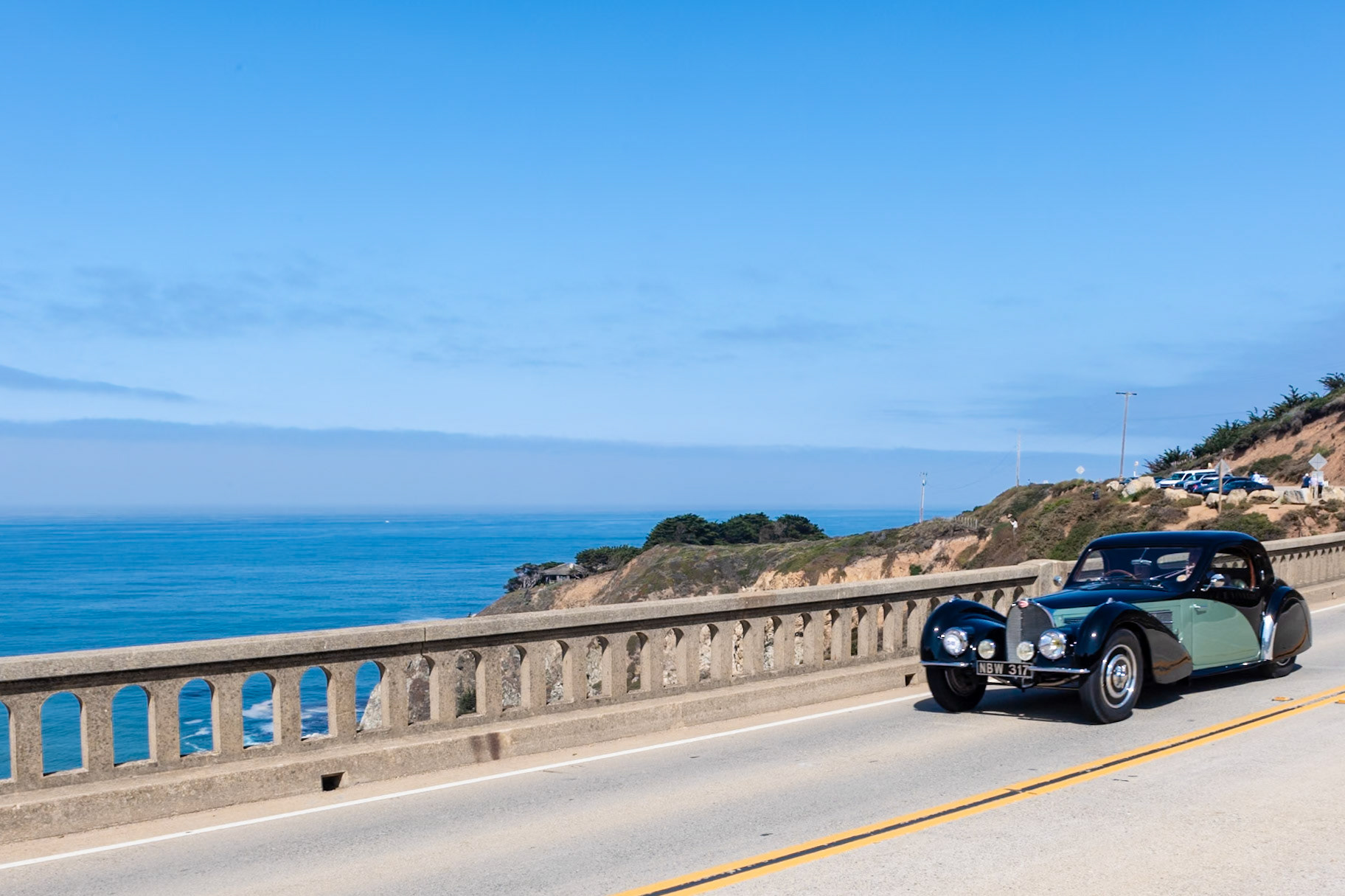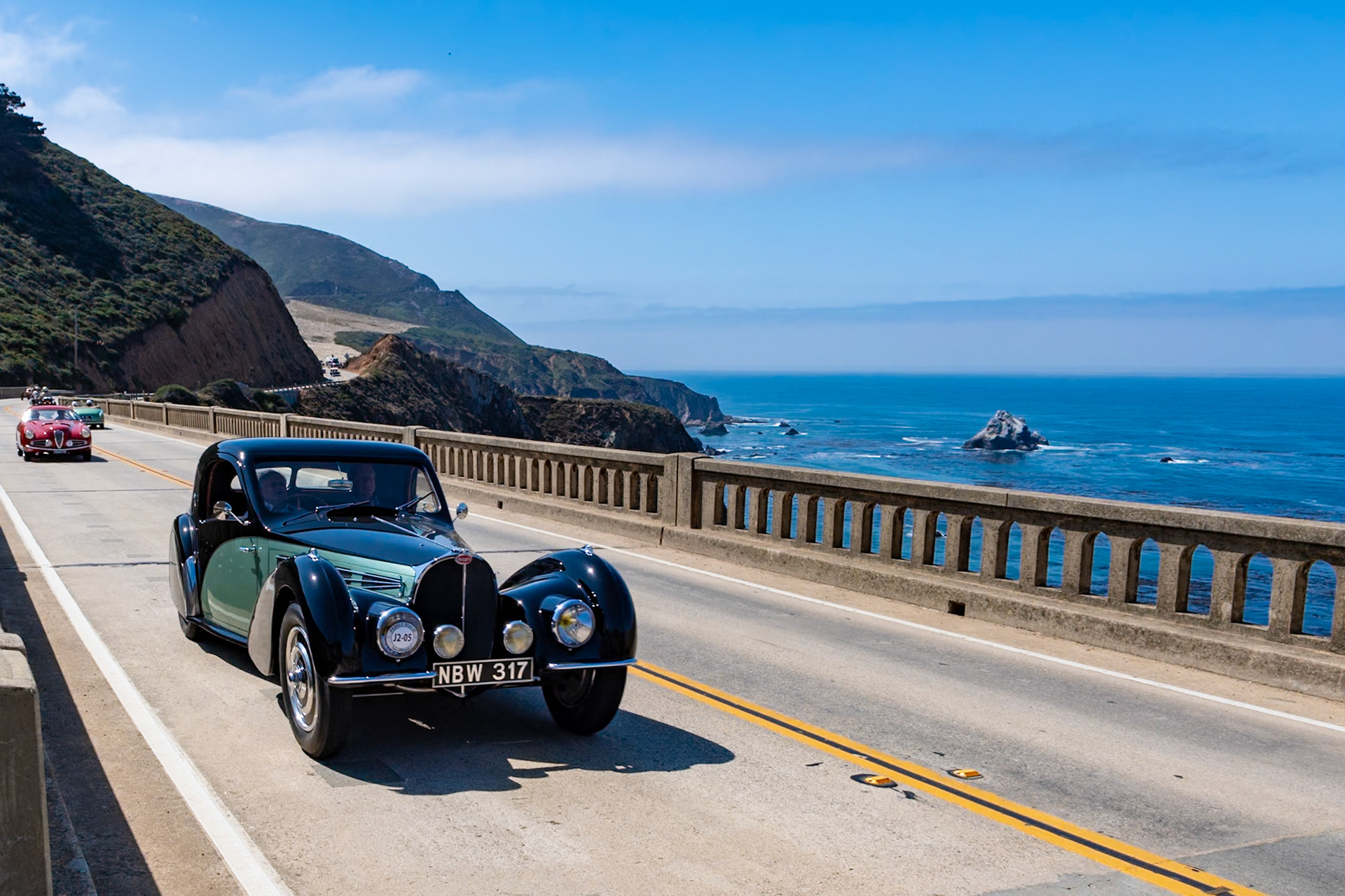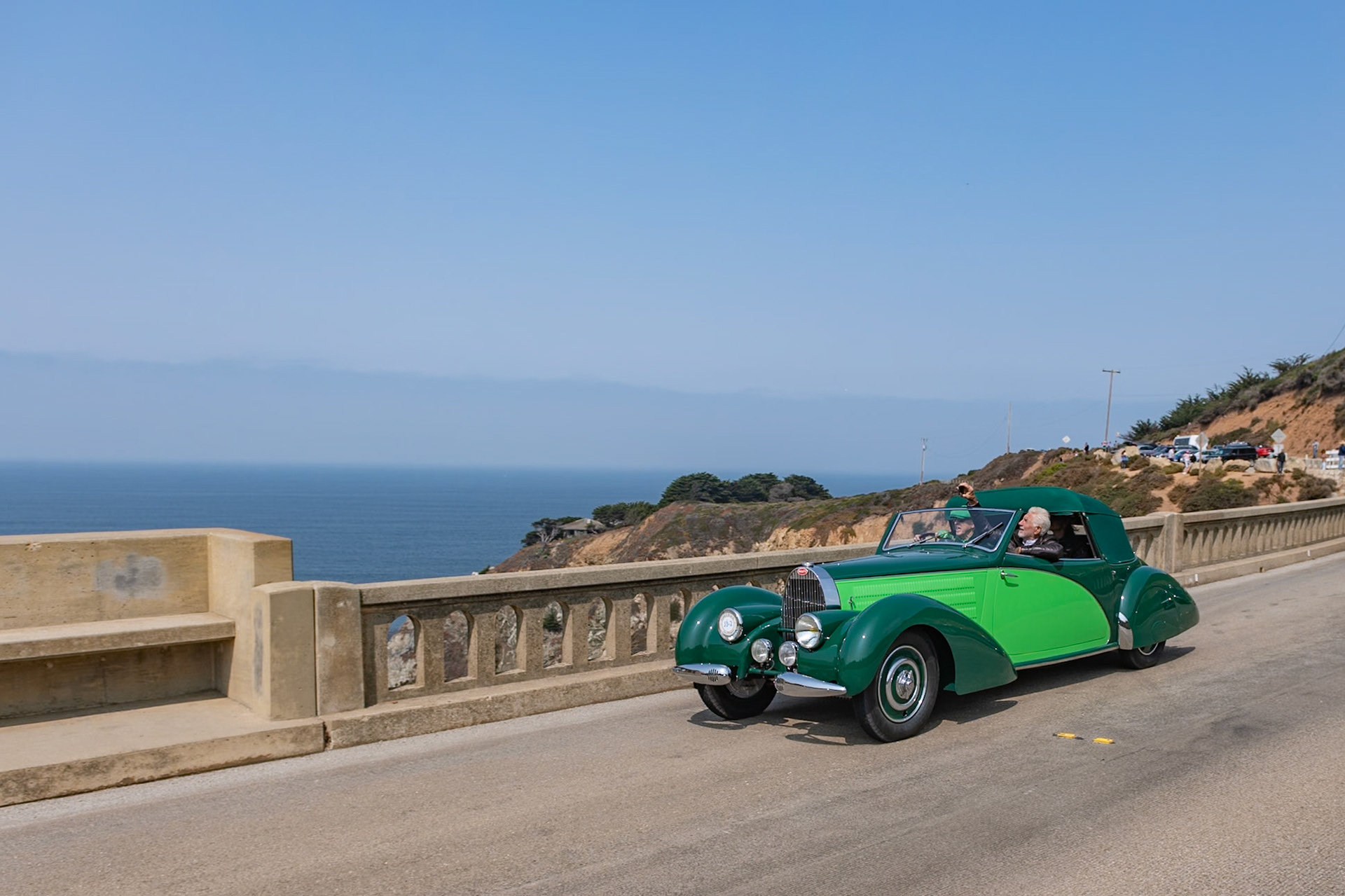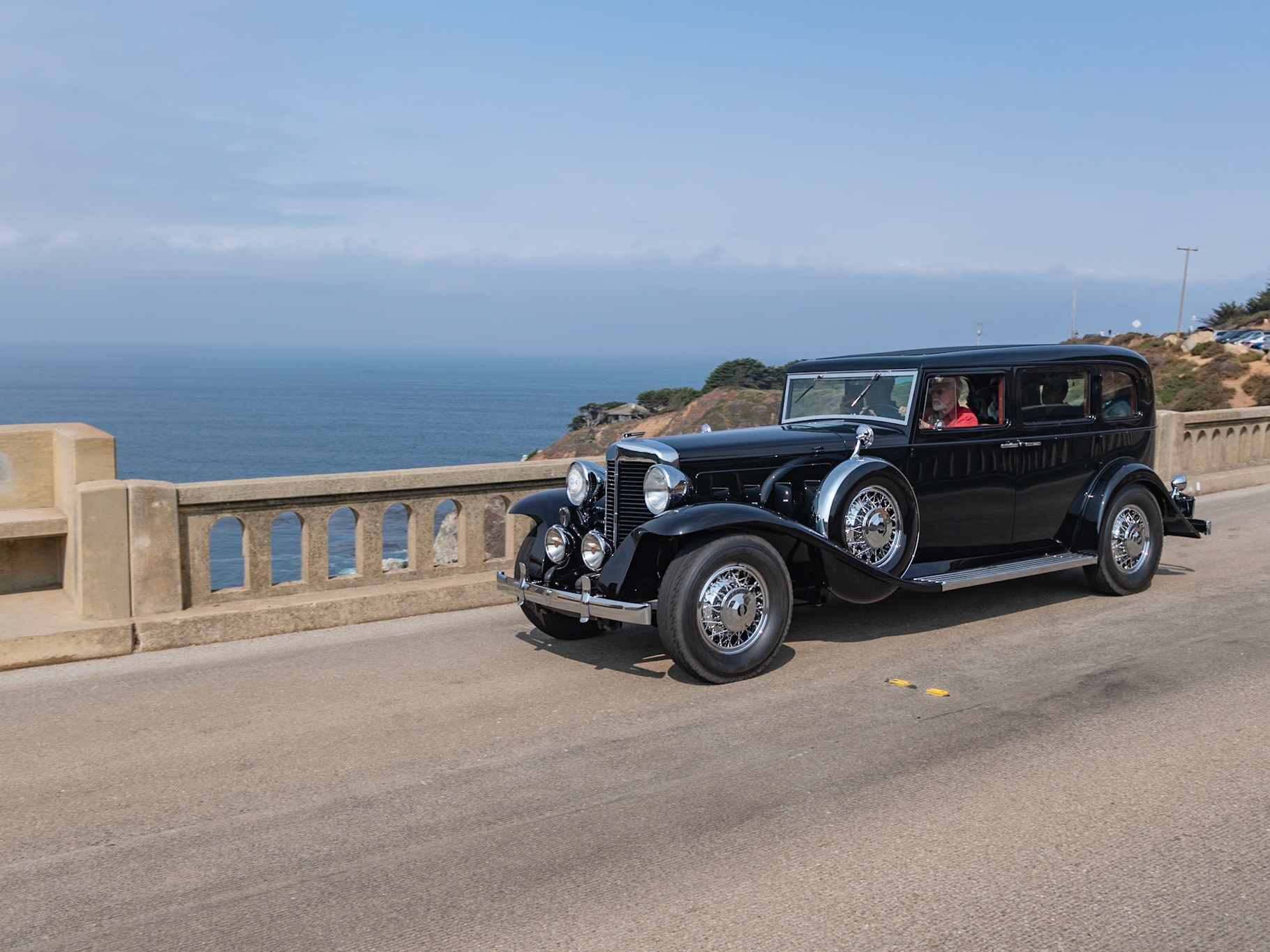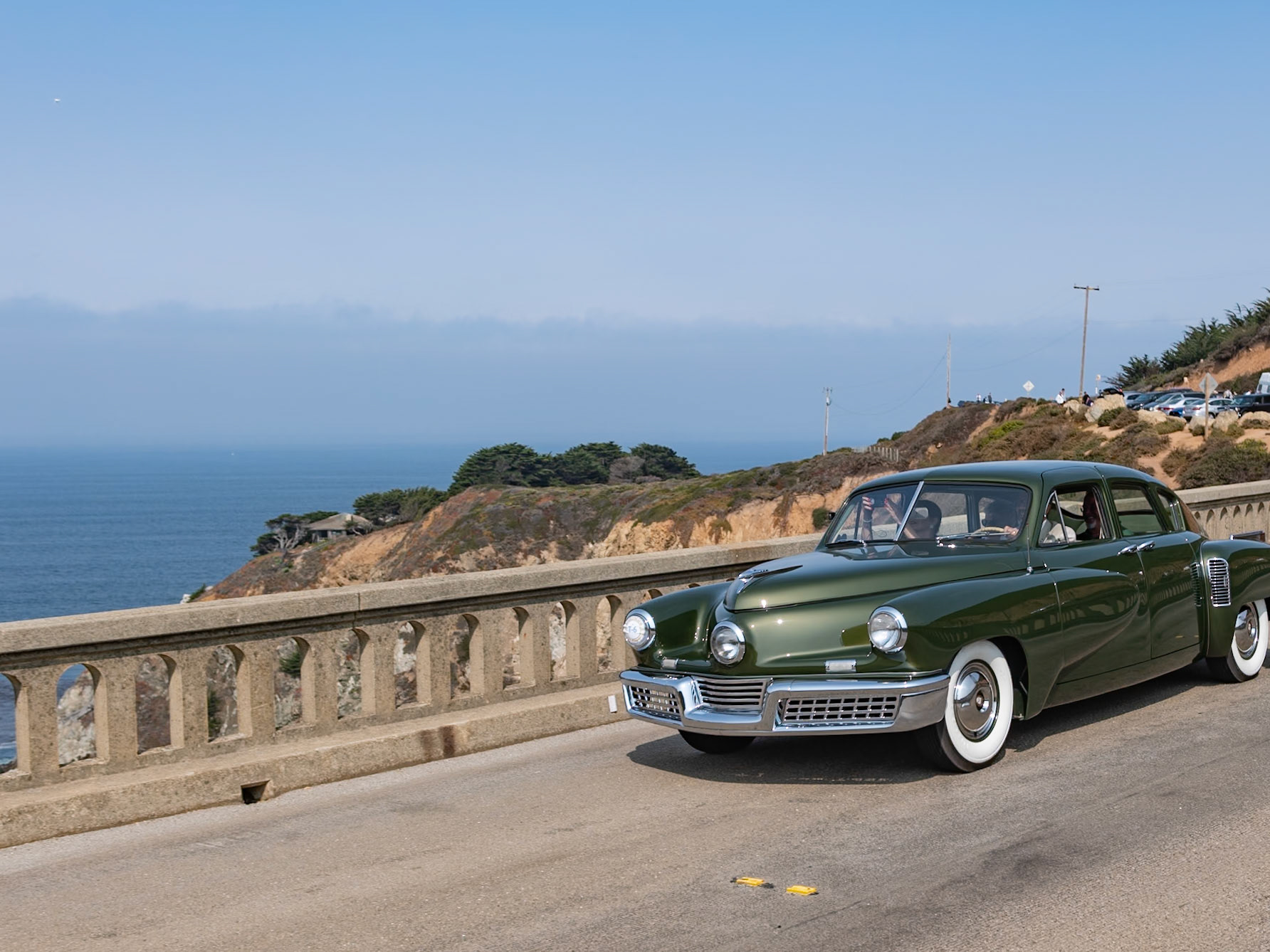
Jeff Pope and Faith Pope, Buckley, WA

Giovanni Moretti founded his company in 1925 to build and sell racing motorcycles, then in the late 1930s he designed his first car. These were modest sports cars with 600 cc engines; as with many small Italian sports cars, the Morettis were inspired by the Mille Miglia. At the 1950 Turin Auto Salon Moretti presented his own 750 cc twin-cam engine, and it was used in at least two cars in the 1956 Le Mans 24 Hours Race. A 1200 cc version of Moretti’s 4-cylinder engine was later installed in this car, one of two Spyders designed by Giovanni Michelotti. The car was shown on the Moretti stand at the 1955 Brussels Motor Show, where Pierre Haverland of Liège purchased it. He kept it for nearly 20 years, racing it in the Tour de Belgique Rally in 1955 and at a local event held on a frozen lake in the winter of 1962. After he sold the car, it was later abandoned, but it was saved in 2000 by Martin Dijkhof, who oversaw its complete restoration.

Giovanni Moretti founded his company in 1925 to build and sell racing motorcycles, then in the late 1930s he designed his first car. These were modest sports cars with 600 cc engines; as with many small Italian sports cars, the Morettis were inspired by the Mille Miglia. At the 1950 Turin Auto Salon Moretti presented his own 750 cc twin-cam engine, and it was used in at least two cars in the 1956 Le Mans 24 Hours Race. A 1200 cc version of Moretti’s 4-cylinder engine was later installed in this car, one of two Spyders designed by Giovanni Michelotti. The car was shown on the Moretti stand at the 1955 Brussels Motor Show, where Pierre Haverland of Liège purchased it. He kept it for nearly 20 years, racing it in the Tour de Belgique Rally in 1955 and at a local event held on a frozen lake in the winter of 1962. After he sold the car, it was later abandoned, but it was saved in 2000 by Martin Dijkhof, who oversaw its complete restoration.

The Bugatti Type 57S was built in Molsheim between 1936 and 1938. The “S” stood for surbaissé, meaning lowered, but the car was in effect an entirely new sports car. The new model was an immediate success although just 43 Type 57S chassis were built by the factory. The high-compression engine was also offered with a Roots supercharger, and only two of these supercharged S chassis were sold by Bugatti although many chassis were later uprated. The Type 57S was available with factory-built Atalante coachwork, but the chassis was often bodied by other coachbuilders. This example (chassis 57501) has a coupé body by Gangloff with lines similar to the Atalante. The unique 3-seater was fitted for its first owner, Camille Jourde. The car later spent a short period at the Schlumpf Museum in Mulhouse, France, but then was brought to America. It was last shown at the 2007 Pebble Beach Concours d’Elegance where it was awarded the coveted French Cup.

Julius and Jette Kruta and Jasper and Maja Kruta, Gengenbach, Germany

Jeff Pope and Faith Pope, Buckley, WA

The Bugatti Type 57S was built in Molsheim between 1936 and 1938. The “S” stood for surbaissé, meaning lowered, but the car was in effect an entirely new sports car. The new model was an immediate success although just 43 Type 57S chassis were built by the factory. The high-compression engine was also offered with a Roots supercharger, and only two of these supercharged S chassis were sold by Bugatti although many chassis were later uprated. The Type 57S was available with factory-built Atalante coachwork, but the chassis was often bodied by other coachbuilders. This example (chassis 57501) has a coupé body by Gangloff with lines similar to the Atalante. The unique 3-seater was fitted for its first owner, Camille Jourde. The car later spent a short period at the Schlumpf Museum in Mulhouse, France, but then was brought to America. It was last shown at the 2007 Pebble Beach Concours d’Elegance where it was awarded the coveted French Cup.

This unique Bugatti (chassis 57819), often called the “Waterfall Grille Bugatti” due to its distinctive cabriolet coachwork by Voll & Ruhrbeck, is one of the most well-known of the 96 supercharged Type 57Cs. It was one of the very last Type 57 chassis sold before the start of World War II and the last Bugatti delivered to Germany in 1939. Archival photos taken in late 1939 when the then-new Bugatti was being used by Norwegian Olympic ice skating champion Sonja Henie while in Berlin show the car with a Berlin ice skating badge. When World War II broke out across Europe the car was hidden away for safekeeping until 1946. After changing hands several times, the body and chassis were separated in the 1960s; the body was owned by a German collector and the chassis and drivetrain by a Swiss collector. In 2002, the Patterson Collection acquired all of the separated parts and restored the car to its original condition.

The Bugatti Type 57, introduced in 1934, was the first new model built under Jean Bugatti’s direction. It incorporated many new features, including a vastly improved twin-overhead camshaft 8-cylinder, 3.3-liter engine based on the previous Type 49. A total of 680 Type 57s were built before the model ceased production in 1940, and many were bodied by French coachbuilders. The coupé body on this car (chassis 57295) was mistakenly attributed to Gangloff for years, but intensive research at the Bugatti Trust in England during the car’s recent restoration confirms that it was designed by the Parisian Carrosserie of Henri Binder, who is famous for the Coupé de Ville coachwork he created for the Bugatti Type 41 Royale. Today the car is exactly as it was when it was delivered in 1936.

Julius & Jette Kruta and Jasper and Maja Kruta, Gengenbach, Germany

This Bugatti Type 57S (chassis 57541) was originally ordered from the marque’s London agent by American racing driver George Rand. The bare chassis was sent to Vanden Plas to build a sports tourer body similar in style to a Bugatti owned by Malcolm Campbell. The finished car was shipped to New York, where it was first driven in the A.R.C.A. races on September 25, 1937. Afterward, the car was shipped back to London to be sold, and it was shown on the Bugatti stand at the 1938 Olympia Motor Show. In 1947, Jack Robinson bought the car and exported it to Trinidad where, equipped with a Type 35B supercharger, it was raced by Robinson at the Trinidad Aerodrome. There it remained for more than thirty years before returning to England with British collector Peter Agg, who rebuilt it and regularly used it in vintage hill climbs and circuit races. Its current owner acquired the car in 2016 and has returned it to its original specifications, complete with its original Vanden Plas body panels and original engine.

This Bugatti Type 57S (chassis 57541) was originally ordered from the marque’s London agent by American racing driver George Rand. The bare chassis was sent to Vanden Plas to build a sports tourer body similar in style to a Bugatti owned by Malcolm Campbell. The finished car was shipped to New York, where it was first driven in the A.R.C.A. races on September 25, 1937. Afterward, the car was shipped back to London to be sold, and it was shown on the Bugatti stand at the 1938 Olympia Motor Show. In 1947, Jack Robinson bought the car and exported it to Trinidad where, equipped with a Type 35B supercharger, it was raced by Robinson at the Trinidad Aerodrome. There it remained for more than thirty years before returning to England with British collector Peter Agg, who rebuilt it and regularly used it in vintage hill climbs and circuit races. Its current owner acquired the car in 2016 and has returned it to its original specifications, complete with its original Vanden Plas body panels and original engine.

This Bugatti Type 57S (chassis 57541) was originally ordered from the marque’s London agent by American racing driver George Rand. The bare chassis was sent to Vanden Plas to build a sports tourer body similar in style to a Bugatti owned by Malcolm Campbell. The finished car was shipped to New York, where it was first driven in the A.R.C.A. races on September 25, 1937. Afterward, the car was shipped back to London to be sold, and it was shown on the Bugatti stand at the 1938 Olympia Motor Show. In 1947, Jack Robinson bought the car and exported it to Trinidad where, equipped with a Type 35B supercharger, it was raced by Robinson at the Trinidad Aerodrome. There it remained for more than thirty years before returning to England with British collector Peter Agg, who rebuilt it and regularly used it in vintage hill climbs and circuit races. Its current owner acquired the car in 2016 and has returned it to its original specifications, complete with its original Vanden Plas body panels and original engine.

This elegant Bugatti Type 57 (chassis 57644) is one of six similar Bugattis designed and built by the exclusive Parisian carrosserie Letourneur & Marchand, which was founded by Jean-Marie Letourneur and Jean-Arthur Marchand. The car accompanied its second owner, wealthy young Dutchman Rudi Van Daalen Wetters, to Los Angeles when he lived there in the 1950s, then returned with him to Holland when he became the attaché to Prince Bernhard of The Netherlands. By the 1990s Wetters and the car were back in Los Angeles, where the car was stored in a garage for almost 30 years. Jim Hull was introduced to the car and its owner by Phil Hill in 1985, and Jim and Rudi began a 30-year friendship that lasted until Rudi passed in 2015. Fittingly, the car was sold by Rudi’s family to Jim, who has now restored the car in its original two-tone green paintwork.

This elegant Bugatti Type 57 (chassis 57644) is one of six similar Bugattis designed and built by the exclusive Parisian carrosserie Letourneur & Marchand, which was founded by Jean-Marie Letourneur and Jean-Arthur Marchand. The car accompanied its second owner, wealthy young Dutchman Rudi Van Daalen Wetters, to Los Angeles when he lived there in the 1950s, then returned with him to Holland when he became the attaché to Prince Bernhard of The Netherlands. By the 1990s Wetters and the car were back in Los Angeles, where the car was stored in a garage for almost 30 years. Jim Hull was introduced to the car and its owner by Phil Hill in 1985, and Jim and Rudi began a 30-year friendship that lasted until Rudi passed in 2015. Fittingly, the car was sold by Rudi’s family to Jim, who has now restored the car in its original two-tone green paintwork.

This elegant Bugatti Type 57 (chassis 57644) is one of six similar Bugattis designed and built by the exclusive Parisian carrosserie Letourneur & Marchand, which was founded by Jean-Marie Letourneur and Jean-Arthur Marchand. The car accompanied its second owner, wealthy young Dutchman Rudi Van Daalen Wetters, to Los Angeles when he lived there in the 1950s, then returned with him to Holland when he became the attaché to Prince Bernhard of The Netherlands. By the 1990s Wetters and the car were back in Los Angeles, where the car was stored in a garage for almost 30 years. Jim Hull was introduced to the car and its owner by Phil Hill in 1985, and Jim and Rudi began a 30-year friendship that lasted until Rudi passed in 2015. Fittingly, the car was sold by Rudi’s family to Jim, who has now restored the car in its original two-tone green paintwork.

This Bugatti Type 57S (chassis 57541) was originally ordered from the marque’s London agent by American racing driver George Rand. The bare chassis was sent to Vanden Plas to build a sports tourer body similar in style to a Bugatti owned by Malcolm Campbell. The finished car was shipped to New York, where it was first driven in the A.R.C.A. races on September 25, 1937. Afterward, the car was shipped back to London to be sold, and it was shown on the Bugatti stand at the 1938 Olympia Motor Show. In 1947, Jack Robinson bought the car and exported it to Trinidad where, equipped with a Type 35B supercharger, it was raced by Robinson at the Trinidad Aerodrome. There it remained for more than thirty years before returning to England with British collector Peter Agg, who rebuilt it and regularly used it in vintage hill climbs and circuit races. Its current owner acquired the car in 2016 and has returned it to its original specifications, complete with its original Vanden Plas body panels and original engine.



